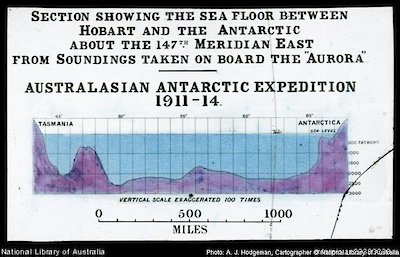Science on a heaving deck
The kind of science needed to be done on board Aurora was apparently not what the professional scientists Edgar Waite and Theodore Flynn (father of the Hollywood actor Errol Flynn) had in mind when they contracted to work with Davis for the 1912 marine science cruises. Waite was the senior scientist for the first cruise; Flynn for the second.
For the first sub-Antarctic cruise, Waite, curator of the Canterbury Museum, Christchurch, was recommended to Mawson by Hedley (who declined the offer to go himself). The cruise was not a success for Waite. Davis was disappointed in his apparent ignorance of deep-sea trawling. Waite blamed the lack of results on poor weather, but did show much more interest in the collection of specimens on Macquarie Island.
For the second sub-Antarctic voyage Davis turned to Flynn, a University of Tasmania biology professor recommended by Professor TE David. If anything Flynn turned out to be an even worse choice. Davis found Flynn to be ‘quite … unsuitable’ for shipboard life, ‘with nothing to do but grumble and make mischief’. Flynn never completed the writing up of his AAE studies despite much prompting from Mawson.
But the sub-Antarctic cruises had their successes. The mapping of the sea floor south of Tasmania was the most systematic yet attempted. The exercise resulted in the discovery of a large undersea plateau to the south and south-east of Tasmania now known as the South Tasman Rise.
The routine of marine observation stations was something Davis managed well. He later wrote that he remembered the devotion of the ship’s crew ‘with admiration and gratitude’. He recalled the routine in his book High Latitude:
Once a day, usually at 1000 in the forenoon watch, the ship would be stopped and a deep sea sounding taken with the Lucas sounding machine. … Though frequently wet to the skin and frozen to the marrow, the sounding party … acquired a high degree of skill in tending the gear.
In 1914, for his contribution to hydrography and bathymetry, Davis was appointed to two research committees of the British Association for the Advancement of Science.

